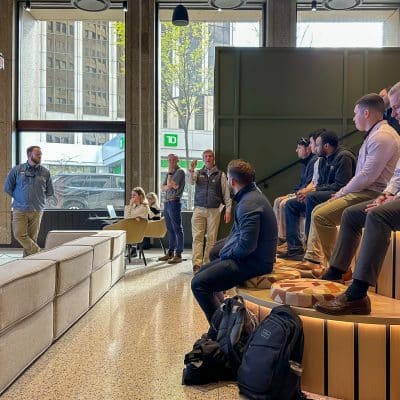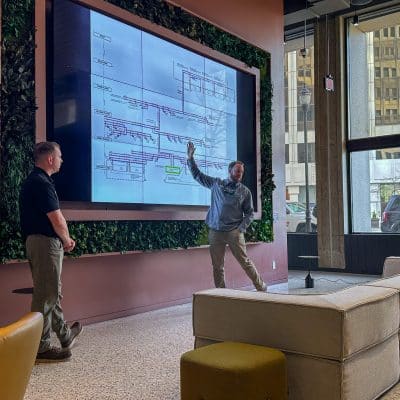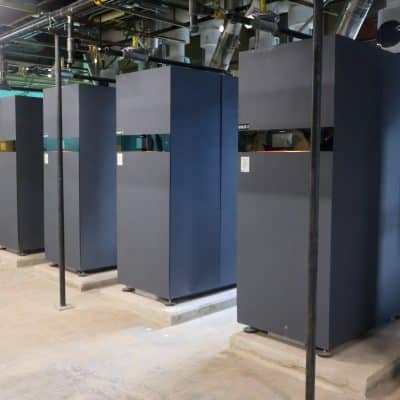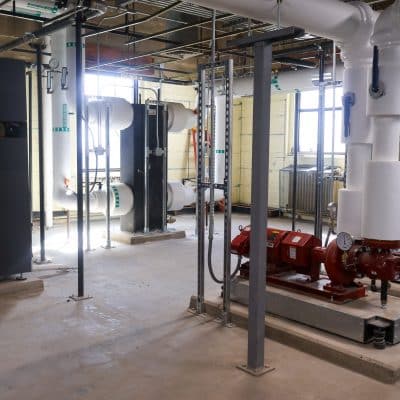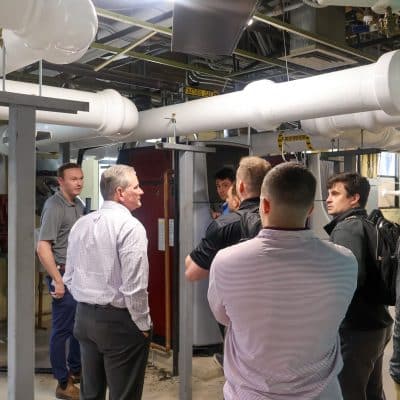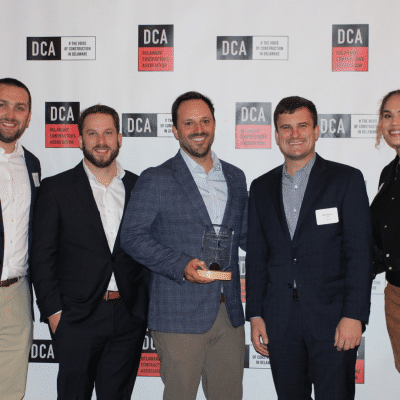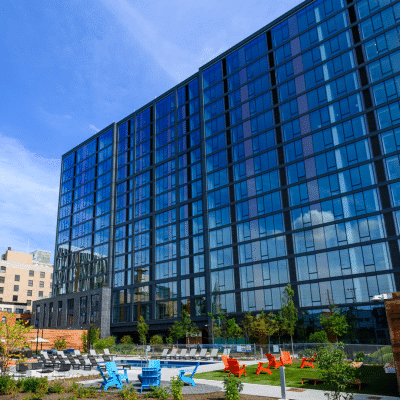
Build and Learn: Commercial Condensing Boilers
April 28, 2025 2:56 pmAt BPGS Construction, continuous learning isn’t just encouraged—it’s embedded in the culture. Our company is committed to supporting associate growth through shared knowledge and team connection. One key initiative is our Build and Learn sessions, where associates come together on active job sites to explore unique project elements or collaborate on solutions to challenges faced in the field. This session we discussed condensing boilers.
Inefficient heating and hot water systems are a common issue in commercial construction when dealing with again infrastructure, especially when energy performance and long-term cost savings are priorities. Sometimes, traditional boilers and outdated systems waste fuel, deliver inconsistent output, and increase emissions. These inefficiencies impact occupant comfort, raise operational costs, and hinder sustainability efforts.
At BPGS Construction, we solve these challenges with modern systems such as commercial condensing boilers. These systems maximize efficiency, lower emissions, and ensure consistent performance. For this month’s Build and Learn, Superintendent Elliot Greer and Project Manager Joe Fulton led a discussion on how we integrate these systems to deliver long-term value. Here’s how we tackled the challenges—and what makes our approach effective.
Upgrading Outdated Systems
Many facilities still depend on aging steam or hot water systems that no longer meet modern performance demands. For example, in one of our current projects, we identified an inadequate steam plant. If appropriate, rather than repair an outdated system that may still create obstacles down the line, decommission it and implement a new standalone setup designed for today’s needs. This upgrade improves energy use, reduces maintenance, and increases reliability.
System and Piping Design
Effective boiler commissioning starts with a thorough understanding of the building’s heating demands and layout. Select a boiler type and system design that aligns with the facility’s requirements. Options may include single-pipe, two-pipe, or primary/secondary loop systems, among others. Condensing boilers can operate as standalone units, in cascade, or in lead-lag arrangements depending on control strategies and building demand. In our case, we found that a multiple-boiler system using lead-lag controls, and a primary and secondary loop configuration offered the best balance of efficiency, temperature stability, and zoned heat distribution.
Using thoughtfully planned schematics, we implemented a primary loop to circulate water through the condensing boilers—maintaining stable temperatures—and a secondary loop to distribute heat to various zones via carefully placed pumps and piping. This layout maximizes efficiency and prevents system overload.
Installing Condensing Boilers
Condensing boilers recover latent heat from exhaust gases, delivering more energy from the same fuel input. Installation requires strong coordination between engineers, equipment manufacturers, and the facility staff. Consider key factors like fuel type, spatial constraints, and venting needs. The result is a cleaner, more efficient system with long-term value for the client.
Testing, Balancing & Final Commissioning
After installation, test system performance, verify flow rates, and fine-tune controls. This may include adjusting valves to maintain pressure, tinkering with set points, applying temperature sensors, and calibrating boiler controls. Adjusting as needed to ensure smooth operation under real-world conditions. These steps ensure that the system delivers energy savings and consistent heat from day one. These steps may also require further coordination with the office building’s maintenance and administration teams, licensed installation contractor, as well as the equipment manufacturer.
Successful System Upgrades
Outdated systems can increase costs, fail to meet energy demands, and reduce occupant comfort. Assessing the infrastructure, mapping out new systems, and carefully installing upgrades can improve performance significantly. Work closely with manufacturers and facility stakeholders to ensure optimal results. Finally, aim to schedule installations during favorable weather conditions to avoid complications from extreme heat or cold.
In the end, upgrading to commercial condensing boilers provides long-term cost savings and improved energy efficiency. By following a clear process of assessment, planning, installation, and continuous refinement, these systems deliver lasting benefits for both clients and occupants.
If you’re passionate about learning, collaboration, and driving innovation in the field, we’d love to have you on our team. Explore our current job opportunities and see how you can grow with us.

